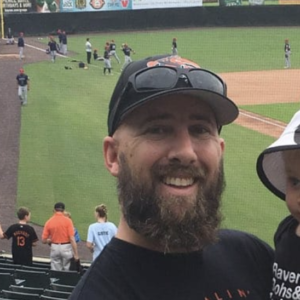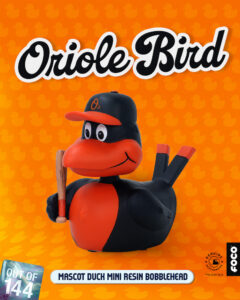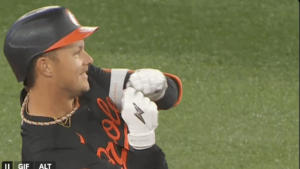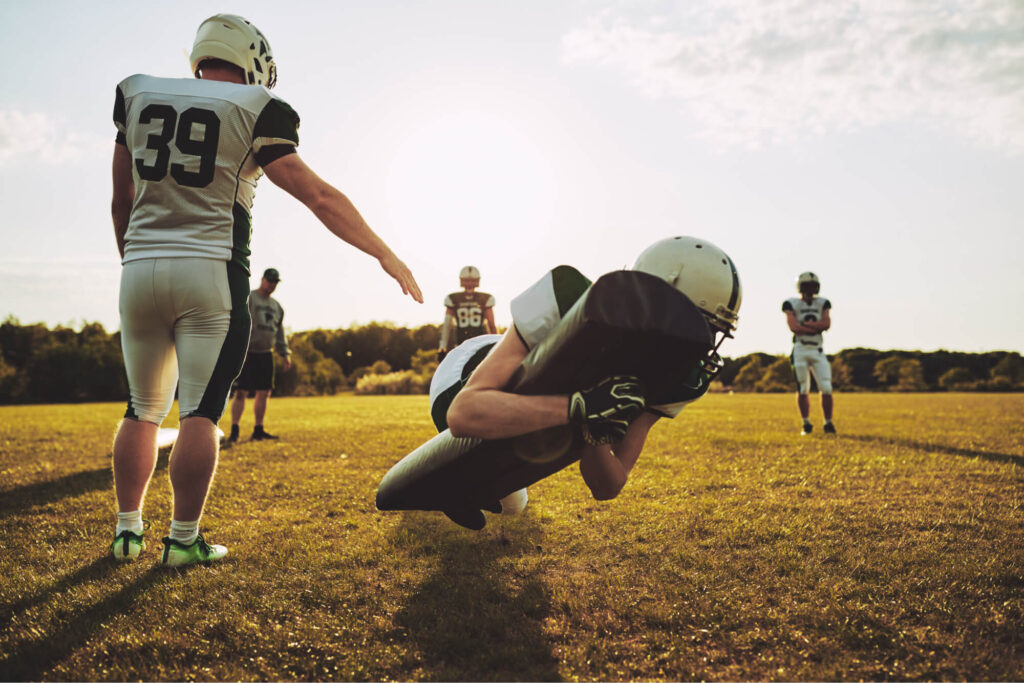That’s a name that, for a time, was right up there with death & taxes as far as “things you can count on.” In Baltimore, anyway, O’Day coming in in the seventh or eighth inning and quickly advancing the proceedings to allow Jim Johnson or Zach Britton their next save opportunity was nearly as automatic as ol #8, Cal Ripken Jr., trotting out onto the infield every night.
Claimed off waivers from Texas in November of 2011, O’Day came to Baltimore and immediately impressed as a key cog in the Birds’ magical 2012 season. You don’t go 29-9 in one-run games and 16-2 in extra innings without some superb bullpen performances, and Darren did more than his part. He was 7-1 out of the ‘pen, pitching 67.0 innings while striking out 9.27 batters per nine, walking only 1.9, stranding 85% of inherited runners, allowing an opponent slash line of .199/.254/.360 (good for a .264 wOBA), and posting an ERA, FIP, and DRA* (hold tight if this is a new one for you) of 2.28, 2.96, and 3.31, respectively.
*DRA – “Deserved Run Average” from Baseball Prospectus. I’ll be using that figure a lot here, and will provide additional reading at the bottom, if you’re so inclined. Suffice to say, for now, it’s the most advanced metric currently available to determine just how responsible a pitcher is for the runners that cross the plate under his watch. It’s both descriptive (tells you what happened, like ERA) and predictive (gives us an idea of a pitcher’s quality going forward, like FIP/xFIP).
O’Day was just as good as far as results in 2013 (2.18 ERA, .207/.273/.344, .274 wOBA against), even if the advanced stats didn’t love him as much (3.58 FIP, 4.03 DRA, likely due largely to a bit of a drop in K/9 to 8.56).
It was the same story for much 2014. On the whole, O’Day posted career bests (at the time) in:
— Innings pitched (68.2)
— ERA (1.70)
— WHIP (0.89)
— Opponent average against (.172)
— Saves (4)
However, at the worst possible time, O’Day dealt with his first injury as an Oriole. On September 7, Roch reported that he was dealing with some hamstring soreness. At that point, he hadn’t pitched in five days, since September 2, when he gave up a home run to Cincinnati’s Jay Bruce. Before the Bruce dinger, he had allowed three home runs in 59.2 IP in 2014. In September alone, he gave up three in just 9.0 IP.

Then – as we all unfortunately vividly remember – this run of gopher balls continued into the postseason. With the O’s clinging to a 4-2 lead in Game 1 of the ALDS against Detroit, O’Day served up a solo shot to Miguel Cabrera (hey, no shame in that, right?), but thanks to the Birds putting up an eight-spot in the bottom of the inning, this home run was quite inconsequential, and quickly forgotten.
The next one he gave up that October? Yeah, not so meaningless.
(If you avert your eyes for the next paragraph, I won’t blame you.)
Game 1 of the ALCS vs. Kansas City. Game tied at five. Top of the 10th inning. Oriole Park at Camden Yards quite ready for some Orioles Magic. Just need a quick 1, 2, 3, from O’Day and we’re back up to bat and…oh, CRAP ON A CRACKER. Leadoff home run, Alex Gordon. KC leads 6-5, scores two more in the inning, and that snowball that started rolling downhill with O’Day’s delivery to Gordon does nothing but pick up speed, mass, and a generation-plus of Orange dreams as the Birds were swept out of the chance to go to their first World Series in 31 years.
(Alright, everybody back with me? Honestly, I had to take a break after writing that graph as well. What a terrible, terrible time for O’Day to not be 100%.)
This, annoyingly, led many O’s fans to dive headfirst off the O’Day bandwagon with enthusiasm. “He’s bum!” “He’s a choke artist!” “He’s terrible in the playoffs, get rid of him!” Adding to this sentiment was the fact that the team had added Andrew Miller for that 2014 postseason run, and he was pretty much the only Oriole to do his job against Kansas City. He was a pending free agent, and that domination was fresh in our minds. Birdland wanted Miller back, no matter the cost. Of course, that didn’t happen, and he’s been pretty amazing since. Good for him!
[O’Day though? Yeah, not a choker, and not terrible in the playoffs. Those naysayers were suffering from some selective amnesia regarding the 2012 playoffs, in which Darren allowed only a pair of baserunners (1 H, 1 BB) in 7.0 IP over five appearances. In the O’s 2016 Wild Card game, O’Day entered a tie game in the bottom of the ninth when Toronto had the winning run on second, another guy on first, and just one out. A Russell Martin 5-4-3 later, and we were headed to extras. Darren turned in a 1-2-3 10th inning for good measure.]
Back to our chronology: O’Day’s struggles continued into 2015, though things seemed to largely be going sideways due to his sudden inexplicable habit of serving up meatballs to the game’s best hitters (as I wrote about at the time). In that article I just linked, I said I was choosing to not worry about the submariner. Turns out, I was right! Broken clocks, etc. He gave up just three homers after April in 2015, a stretch of 57.0 IP. His final numbers for that year were outstanding – career bests in:

(His DRA that season came in at 2.71, third-best in his career, second-best to that point.)
Following that, his best season by so many measures, O’Day was a free agent. After reportedly being very close to heading south on 95 and becoming a Washington National, somebody in The Warehouse (of course, nobody knows who to credit) reeled him back in, with the two sides agreeing on a new four-year $31 Million deal.
2016, the first year of that deal, was a tough one for Darren. Thanks a slow-healing hamstring strain that kept him out for nearly two months and a shoulder injury later in the year that he exacerbated by trying to pitch through, he appeared in only 34 games, pitching just 31.0 innings, both lows since coming to Baltimore. In those innings, he wasn’t himself, posting his highest ERA since becoming an Oriole at 3.77, as well as distressing peaks in FIP (4.57) and xFIP (3.93). As for DRA, his 3.74 was second-worst to only 2013 as far as his time in orange and black goes.
Last year, he bounced back with a healthy season, but the advanced metrics disagree a bit on just how good he was. Appearing in 64 games, O’Day threw 60.1 innings with an ERA of 3.43 – second highest since joining the Birds, with only 2016 being worse.
The main culprit? A career-high eight home runs allowed. His 15.7% HR/FB rate was down only slightly from 2016’s 17.1%, and still up significantly from that to which we had grown accustomed:
2012: 8.2%
2013: 10.4%
2014: 9.5%
2015: 7.2%
Career: 9.8%
His fly ball percentage was actually quite low – 37.5%, a career-low (corresponding to a career-high 47.8% ground ball percentage). It was just that, when the ball was put in the air, it left the park at a much higher rate than Darren was used to, or than we see overall in MLB (13.7%).
Was this an O’Day problem specifically?
Perhaps not – HR/FB has increased league-wide for four straight years, from 9.5% in 2014, to 11.4% in 2015, to 12.8% in 2016, and finally to that 13.7% figure last year. This is no surprise, and as teams continue to focus more on swing paths that produce the optimal launch angles, this isn’t a trend that’s likely to reverse any time soon.
O’Day has always manged to be below league average in this category though, with the exception of the past two seasons. It seems fair to assume that his HR/FB will regress back to a more comfortable mean in 2018.
So, home runs aside, how did his other numbers stack up against his incredible 2015 season?

You’ll notice that the Baseball Prospectus analytics (DRA, WARP) liked O’Day’s 2017 much more than FanGraphs’ (FIP, xFIP, fWAR) did. Here’s a sampling of what BP had to say about O’Day in their 2018 Annual:
The king of the eigth inning recovered from an injury-plagued 2016 to post perhaps his finest season yet, and his career splits embody the spirit of Orioles Bullpen Magic: He performs better in the second half of the season, better in late innings, better in high-leverage situations. Some were skeptical of the four-year $31 million contract the team awarkded him, but at least halfway through, he’s earned it…the odds are better than even that he’ll be good again next year, and the odds are even better that most people won’t even notice.
To get some additional insight on this point, I asked BP’s Jonathan Judge, the architect of DRA, what it was about O’Day in 2017 that made him such an apple of the Prospectus team’s eye.
“DRA sees him as being above average (negative is good) in NIP Runs (NIP = “not in play,” so SO, BB, HBP), above average in limiting hard contact (Hit Runs), and only slightly below average in Out Runs (defensive efficiency). The “hit runs” seems to be where a lot of the improvement is seen: home runs fairly controlled despite a high pitcher park factor, and otherwise limiting the damage on hits.”
So basically, he combined a high strikeout rate with a big improvement in generating soft contact from opposing batters. The home runs still stick out to me, but I’ll just have to accept Jonathan’s assertion that DRA considered them “fairly controlled.”
Let’s compare him to another elite reliever in these DRA component categories. Since I apparently enjoy kicking hornets’ nests, how about Andrew Miller?

We see O’Day with a better DRA and WARP (in 2.1 fewer IP) than Miller, thanks to his Hit Runs and Out Runs. Miller’s 13.64 K/9 beat Darren’s mark by over two per nine, so that explains the difference in NIP runs. O’Day made up for it by inducing soft contact though.
My point isn’t that O’Day = Miller. It’s just that the difference may not be as glaring as many Birds fans want to make it.
Let’s have a little more fun, c/o BP. Using their nifty new matchup tool, we can look at any AB from any batter vs. any pitcher from last season. I’m going to choose O’Day (let’s stay on topic here, huh?) against a guy Birdland loves to hate, Josh Donaldson.

In this first AB, from the seventh inning on September 3, we see O’Day attack low and away with a slider, which the guy with the stupid hair fouled off. Donaldson then swung through a high fastball, took one off the outside edge on 0-2, then swung through another one on the outside corner for strike three.
Ten days later, it was O’Day against Donaldson again.

This time, O’Day pitched backwards compared to their previous matchup. He started Donaldson with a fastball, which was taken for a strike. He then flipped the script, throwing two straight sliders, the first fouled off and the second taken for a backwards K.
Good morning, good afternoon, good night.
I love that these two matchups were so closely spaced (remember, just 10 days apart), and O’Day completely changed the way he attacked Donaldson, despite the strikeout in the first encounter. Hitting baseballs is hard!
In conclusion, Darren O’Day is still the damn man, and reports of his demise have been greatly exaggerated. Word is that we may have some closer-by-committee until Zach Britton gets back this season. I love Brad Brach and Mychal Givens too, but neither of those guys will inspire as much confidence that this game is about to go in the win column as Darren will when he comes through those bullpen doors to close things out.
thanks to Baseball Prospectus’s Jonathan Judge and Jeff Long for their help with DRA.











